Investigate Sustainability in Our Latest Carbon Cycle STEM Case

Helping students understand the carbon cycle and sustainability is more important than ever. These concepts show how everything on Earth is connected and how our choices can shape the future of our planet. In our latest Gizmos STEM Case, students dive into the fascinating journey of carbon as it moves through the atmosphere, oceans, land, and living things. It’s a powerful way to help learners see the big picture and discover how to make a difference.
Explore renewable resources in Breaking Bioplastics: Decomposition and the Carbon Cycle
In the new Breaking Bioplastics: Decomposition and the Carbon Cycle STEM Case, students step into the role of a plastics engineer to tackle a real-world challenge: designing a plastic cup made from renewable resources that can decompose and return safely to Earth’s carbon cycle. Aimed at grades 6–8 and spanning 90 minutes, this interactive experience blends Earth and Life Science concepts as students explore how bioplastics break down and what makes a product truly sustainable.
This case goes beyond science content. It empowers students to think critically about the materials they use every day. Students gain a deeper understanding of sustainability by learning how carbon moves through ecosystems and how human-made products can disrupt or support that cycle. These insights help them make more informed choices both in and out of the classroom, inspiring a generation of environmentally conscious problem-solvers.
What can you expect in Breaking Bioplastics: Decomposition and the Carbon Cycle?
The student learning objectives for this STEM Case are designed to deepen students' understanding of environmental science, chemistry, and sustainable design. Students will explore how human activities impact the carbon cycle and the environment through the production and disposal of synthetic polymers. They’ll also evaluate sustainable products and solutions by applying scientific concepts to real-world challenges.
By the end of the lesson, students will be able to:
- Explain how natural resources are used to create synthetic polymers and assess their societal and environmental impacts.
- Describe the formation of fossil fuels from ancient organic matter over millions of years.
- Illustrate how carbon moves through living and nonliving components of the environment.
- Identify the roles of producers, consumers, and decomposers in the carbon cycle.
- Define design criteria for a sustainable plastic cup and evaluate different design solutions.
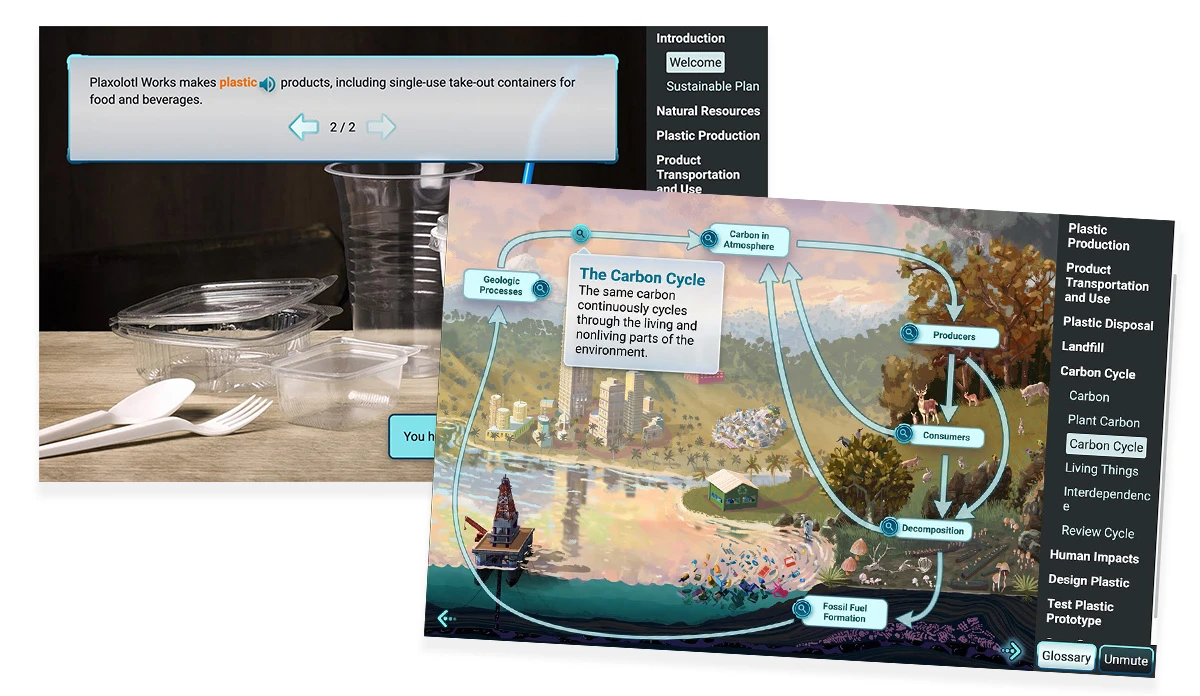
Meet the STEM Experts behind Breaking Bioplastics
Partnering with STEM professionals and teachers is essential when developing new edtech resources because it ensures that content is scientifically accurate and instructionally effective. STEM professionals bring real-world expertise and relevance, while teachers provide insight into classroom needs, student engagement, and curriculum alignment. This collaboration leads to tools that are not only innovative but also practical and impactful for student learning.
Let’s meet the experts who shared their knowledge and expertise for our new STEM Case.

Shannon Pinc
Shannon Pinc is the Senior Circular Economy Manager for NatureWorks, a global biopolymer supplier. Pinc’s interest in managing and maintaining natural resources for future generations led her to complete a B.A. in Biology from St. Catherine’s University and an M.S. in Bioproducts and Biosystems Engineering from the University of Minnesota. At NatureWorks, Pinc partners with stakeholders across the entire value chain to ensure sustainable, circular, end-of-use management of products made with their biopolymers. “I truly enjoyed working with everyone to make this topic easier to understand, while putting it into the context of a research project based on real issues that need solutions,” she said.
Dr. Anne Schauer-Gimenez is the Chief Operations Officer at Mango Materials. She oversees the Products team and facilitates connections between brands seeking sustainable biopolymers and the various material grades they provide. Their biobased biopolymers offer multiple end-of-life solutions, including biodegradability and compostability. “When I was in 7th grade, I did a science fair experiment where I buried several items (diaper, paper bag, Styrofoam take-out container – this was the 80s!, straw, etc.) in soil and every week or so I dug them up and weighed them to see if they 'disappeared'. This exposure to the number of plastics that are disposed of and the harm they could do to the environment set me on a path to pursue Environmental Science and Engineering in college and grad school,” she said.
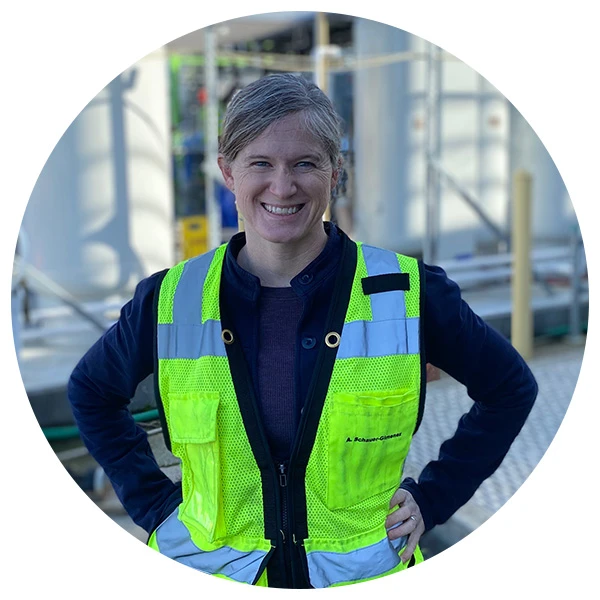
Dr. Anne
Schauer-Gimenez

Dr. Katrina
(Kat) Knauer
Dr. Katrina (Kat) Knauer is a polymer scientist who joined the National Renewable Energy Laboratory (NREL) as a Senior Researcher in Polymer Science and Engineering and the Chief Technology Officer (CTO) of the Bio-Optimized Technologies to Keep Thermoplastics out of Landfills and the Environment (BOTTLE) Consortium. Concurrently, she serves as an Assistant Adjoint Professor and RASEI Fellow in Chemical and Biological Engineering at the University of Colorado, Boulder. She is driven by a steadfast commitment to addressing the pressing issue of plastic waste.
Gaining insights from the STEM classroom
ExploreLearning Collab Crew members Corinne De Keukelaere and Christina B. Howland delivered authentic classroom insights. De Keukelaere is an 8th-grade science teacher in her 26th year of teaching. “I was a Biologist at a pharmaceutical company for four years before I pursued teaching,” she said. “I have always been in the science field, I think because I am interested in 'why'. Teaching middle schoolers, you are constantly being questioned 'why'. When I worked as a Biologist years ago, I enjoyed the research and development area that I was just starting before I began my teaching career.”

Corinne
De Keukelaere
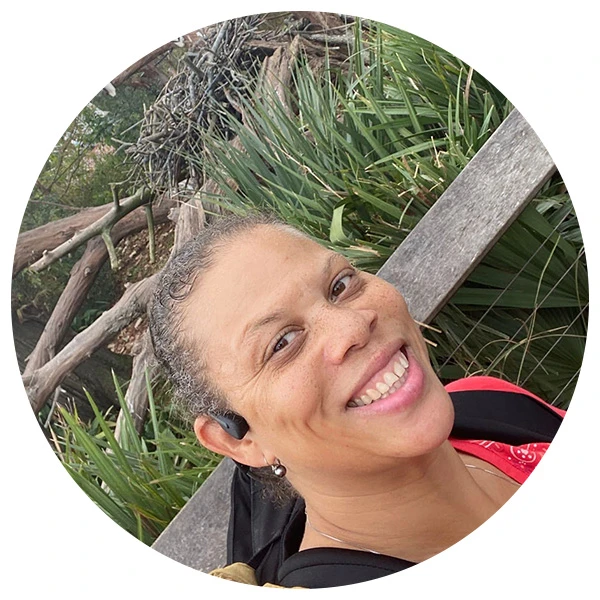
Christina Howland
Howland, an Instructional Specialist, believes that a deep understanding of our natural world is essential for creating a healthier future. “The most exciting part of my work has always been seeing the moment a student connects with a scientific concept and understands its real-world implications,” she said. “In my role, I am dedicated to designing impactful learning solutions that don't just teach facts but empower students to think critically and solve problems. This is precisely why a topic like bioplastics is so compelling—it bridges foundational science with modern-day solutions, inspiring the next generation to be a part of the change.”
Supporting real-world explorations of bioplastics
Plastic is a part of students’ everyday lives, yet most have no idea how it’s made or what happens to it after use. This STEM Case helps students shift from passive consumers to active problem solvers by exploring the environmental impact of plastic and the potential of bioplastics as a sustainable alternative. By investigating how plastic production and disposal contribute to the carbon cycle and carbon footprint, students begin to understand the broader consequences of everyday materials and how they can be part of the solution.
Bioplastics are especially compelling for middle schoolers because they’re tangible and relevant. Students are curious about how conventional plastics are created and eager to explore renewable alternatives. This curiosity drives deeper engagement and empowers students to think critically about sustainability in their own lives.
“We use so much plastic in our everyday lives. It’s important to expose middle schoolers to renewable alternatives that benefit the earth and living things. It’s good to make these young learners part of the solution,” said De Keukelaere.
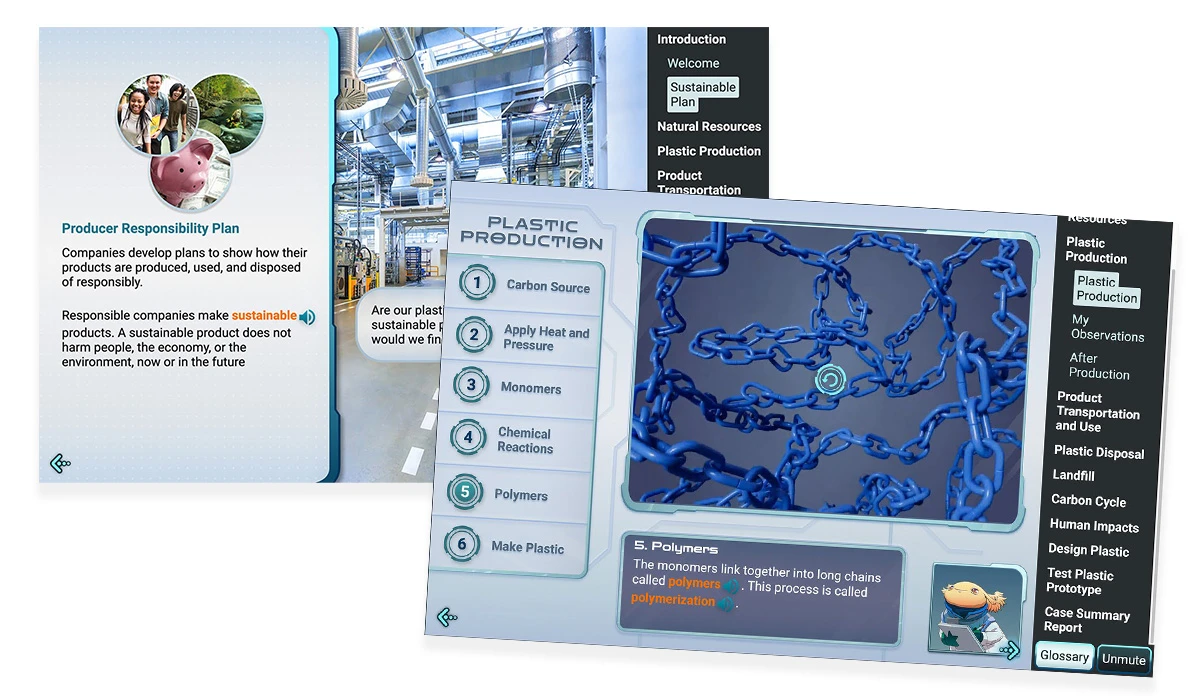
Understanding environmental challenges with the carbon cycle
Helping students grasp the carbon cycle is key to building their understanding of today’s environmental challenges. While middle schoolers may know they exhale carbon dioxide, they often struggle to connect that fact to the broader movement of carbon through ecosystems.
This STEM Case uses interactive carbon cycle activities to make those connections clear and engaging. Instead of blank stares from textbook diagrams, students explore how carbon moves through producers, consumers, decomposers, and the atmosphere. This gives them a concrete understanding of how human actions, like plastic production and disposal, affect the planet. “The biggest challenge was ensuring the content maintained scientific accuracy without overwhelming them. We focused on scaffolding the learning, using clear analogies, and grounding the concepts in real-world examples that students could relate to, making the abstract feel tangible,” said Howland.
Understanding the carbon cycle lays the foundation for exploring climate change, sustainability, and resource management. It helps students see how gases like CO2 are transferred and utilized, and why those processes matter. With Gizmos, students don’t just learn about the carbon cycle. They investigate it through dynamic models that make abstract concepts accessible and memorable.
“In all my experience of trying to teach the carbon cycle and getting blank stares from traditional methods, the Gizmo helps the students really ‘get it’ in a fun way. Understanding the carbon cycle is essential in understanding any environmental issues that face our planet. It is the base of how our essential gases are utilized and transferred,” said De Keukelaere.
Enhancing student engagement and understanding
This STEM Case transforms abstract science concepts into tangible learning experiences, allowing students to actively manipulate variables and observe outcomes. Instead of passively reading or watching, students engage directly with interactive models that simulate processes too complex or impractical to replicate in a typical middle school lab. This hands-on exploration helps learners visualize what’s happening at both microscopic and macroscopic levels, deepening their understanding of topics like the carbon cycle and synthetic polymers.
De Keukelaere said, “STEM Cases are great because students make claims, search for evidence, and must then reason. They are built-in helpers for teachers who are trying to encourage this type of questioning, exploration, and explanation in students.”
Howland hopes students take away a deeper understanding of the carbon cycle and its connection to real-world challenges and develop a stronger appreciation for the interconnectedness of science, technology, and society. “Personally, I hope they feel empowered. I want them to see that they are not just passive observers of these global issues, but active participants in finding solutions. I hope this experience inspires them to be curious, to ask questions, and to see themselves as future innovators and problem-solvers. This sense of agency is a critical component of public health and is a message I try to weave into all of my work,” she said.
“Middle schoolers are the consumers of the future, and they should be able to have access to safer, more environmentally friendly materials,” said Dr. Schauer-Gimenez. “Additionally, knowing the science behind these materials will help them make the best decisions when comparing materials and products. They can also influence their family, parents, siblings, etc. to choose natural, sustainable materials.”
Pinc noted that the carbon cycle plays a critical role in regulating the climate and supporting life. “Understanding the carbon cycle allows us to comprehend the impact of human actions on Earth’s systems and arrive at informed solutions to mitigate those impacts,” she said.
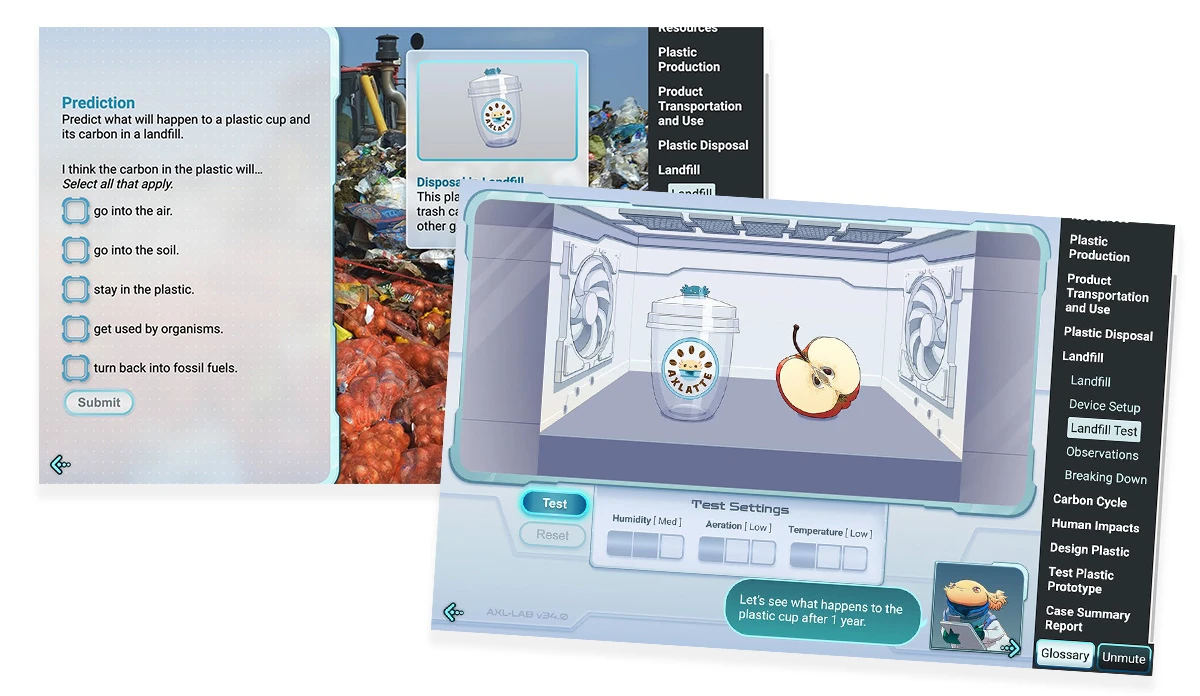
Highlights from the development of Breaking Bioplastics
Creating the Breaking Bioplastics STEM Case was a collaborative effort that brought educators and STEM professionals together to design a meaningful, real-world learning experience. Throughout development, the team faced challenges like translating complex environmental science into middle school-friendly content and ensuring the simulations were accurate and engaging. But those challenges led to powerful wins, like seeing students connect deeply with sustainability concepts and take ownership of their learning.
Here are a few insights and reflections from the STEM professionals who helped shape the case. They share what inspired them, what surprised them, and why this topic matters for today’s learners.

Everybody's Talking About Gizmos
“I had the opportunity to contribute to the development of this STEM Case by collaborating with the learning designer. As a former biology and environmental science teacher, I really enjoyed the process of reviewing the content from a pedagogical perspective. It was particularly rewarding to work with the team to ensure the case would inspire curiosity and critical thinking in young learners, not just present information.”
-Christina Howland“I was able to provide insight into PHAs and the benefits when it comes to sustainability. I really loved seeing the knowledge I provided being translated into the program. I think I had as much fun reviewing the STEM Case as the student’s will when they get to use it! I think translating complex scientific concepts can be one of the most challenging aspects of my role. We want to make science accessible, easy to understand, and not intimidating.”
-Dr. Anne Schauer-Gimenez“I really enjoy expressing my opinions about devices used for teaching middle schoolers. I have years of experience and have tried many tools to help these ever-changing students understand the world around them. In today's world, their brains and the way students learn are constantly changing. The best tool I have used so far is Gizmos! I like how Explore Learning is also evolving with its audience.”
-Corinne De Keukelaere“I completed a test run of the STEM Case and provided feedback on the accuracy of the case studies—serving, in a way, as a fact-checker! It was fun to imagine my younger self working through the material. I also loved the mascot—they were absolutely adorable!”
-Dr. Katrina (Kat) Knauer“I provided technical understanding of biopolymers and their role in a circular economy through the lens of the carbon cycle. I spend much of my time educating a wide variety of audiences on the role of biopolymers, a complex topic. While this material can be quite challenging to grasp, I believe educating our youth about alternative materials is important so that they are not only informed, but also to walk them through how to be good problem solvers.”
-Shannon PincEngage students in sustainability and the carbon cycle
The new STEM Case immerses students in a real-world challenge that blends environmental science, chemistry, and engineering design. “The terminology surrounding plastics and bioplastics can be confusing. As we teach the next generation about the carbon cycle, it’s essential to clarify these definitions,” said Dr. Knauer. “These students will be on the front lines of the fight against climate change, so we must equip them with clear, accurate information and the tools to take a data-driven approach to addressing plastic waste.”
Through interactive simulations and guided inquiry, students explore the life cycle of plastics, from fossil fuel origins to types of decay to sustainable alternatives. They investigate how synthetic polymers are made, how plastic waste affects the carbon cycle, and how industrial composting can return carbon to the environment. This case encourages critical thinking and problem-solving as students define criteria for a sustainable plastic cup and evaluate competing designs based on environmental impact.
“Critical thinking is key. Being able to question the current offerings when it comes to plastics and determine a better solution is valuable for all citizens of the Earth. These students will be able to question their choices and hopefully find more sustainable options to enhance their everyday life,” said Dr. Schauer-Gimenez.
Ready to bring sustainability into your science classroom? Explore the STEM Case and empower your students to design solutions for a cleaner future.
New to Gizmos? Try it for free!
Gizmos STEM Cases go beyond simple simulations. They empower students to experiment, test ideas, and make connections, turning abstract science into concrete knowledge. See for yourself with a free trial.